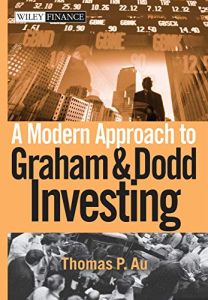Join getAbstract to access the summary!

Join getAbstract to access the summary!
Thomas P. Au
A Modern Approach to Graham & Dodd Investing
Wiley, 2004
What's inside?
Benjamin Graham and David Dodd wrote the classic book on value investing more than 60 years ago - here's the update.
Recommendation
Benjamin Graham and David Dodd literally wrote the book (the classic Security Analysis, 1940) on value investing. Warren Buffett followed their advice, which helped make him a household name. But Graham and Dodd devised their investing approach in the 1930s and, obviously, the markets have changed. Investors face different accounting requirements, international investments and non-equity alternatives to traditional corporate stocks. Author Thomas P. Au has undertaken to update the vintage Graham and Dodd approach and, by using numerous examples and explanations, to make it relevant to today’s markets. The basic emphasis on value remains, but he has adapted it to suit a faster, more complex investment world than the old masters ever imagined. getAbstract.com thinks that they would have approved of Au’s clear, lucid, well-organized book, which is highly recommended for investors.
Summary
About the Author
Thomas P. Au is a vice president and portfolio manager for the investment arm of a large insurance and healthcare provider. He worked previously for an emerging markets firm based in Geneva, Switzerland, and for a New York City investment information firm.












Comment on this summary